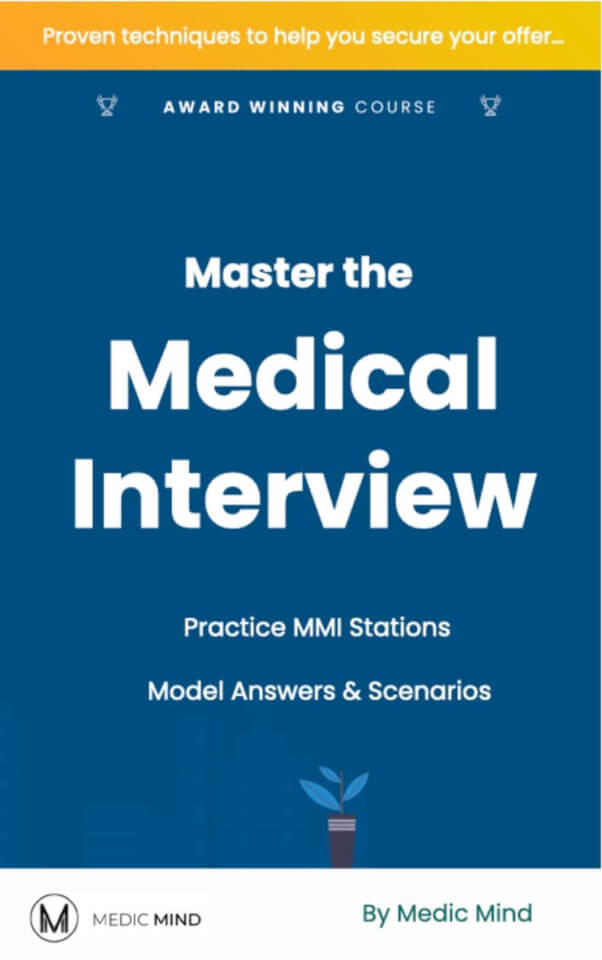Loading...

The Four Pillars of Medical Ethics - A Quick Overview
With over 65.1 million healthcare workers worldwide, upholding ethical standards cannot be overstated. As we delve into this quick overview, we embark on a journey that breaks down these 4 medical ethics pillars.
Dr. Jane Goodall once said, “The least I can do is speak out for those who cannot speak for themselves.” These words resonate strongly in medical ethics, where patient well-being, autonomy, justice, and beneficence are the cornerstone of responsible practice.
Let’s navigate these pillars and unravel their essence in modern healthcare.
What is Medical Ethics?
Medical ethics serve as the moral compass guiding healthcare professionals through the complex landscape of patient care. Rooted in the concepts of ‘good’ and ‘bad,’ ethics underpin the responsibilities of doctors in delivering patient-centred treatments.
The ethical framework is especially critical due to the entrusted role of doctors in promoting well-being and safeguarding patient interests.
At its core, medical ethics ensure doctors navigate challenging decisions, upholding patient welfare and aligning with their wishes. This ethical foundation shapes medical practice’s principles, ensuring doctors prioritise beneficence, avoid harm, uphold fairness, and respect patients’ autonomy.
Thus, medical ethics establish a high standard of conduct, essential for the doctor-patient relationship and the broader healthcare ecosystem.

The 4 Pillars of Medical Ethics
In the intricate landscape of medical ethics, four indispensable principles are guiding beacons for healthcare professionals, shaping their ethical decision-making and actions. These pillars form the bedrock of responsible medical practice, ensuring ethical considerations remain at the forefront of healthcare delivery.
1. Beneficence: Promoting Good
Beneficence encapsulates the profound commitment to the betterment of patients’ well-being. It entails a duty to actively seek out and provide interventions that enhance health outcomes.
Healthcare practitioners adhere to evidence-based treatments and therapies to reduce symptoms, alleviate suffering, and restore health. The principle of beneficence underscores the imperative to act with empathy and dedication, placing the patient’s welfare at the core of every decision.
Example:
When doctors prescribe treatment backed by solid medical evidence, they adhere to the principle of beneficence. For instance, recommending a proven medication or therapy to alleviate a patient’s pain or improve their quality of life showcases the commitment to promoting their well-being.
The doctor’s decision reflects a dedication to offering interventions that benefit the patient’s health.
2. Non-Maleficence: Do No Harm
Non-Maleficence emphasises the unwavering obligation to refrain from causing harm to patients. This principle underscores the importance of maintaining competence and ensuring that the benefits of interventions outweigh potential risks.
It mandates a cautious approach, urging healthcare professionals to exercise prudence and vigilance. By holding non-maleficence in high regard, practitioners uphold the foundation of trust and ethical responsibility, guarding against actions that might compromise patient safety.
Example:
Imagine a patient’s condition necessitates a risky surgical procedure with potential complications. The healthcare team thoroughly assesses the risks and benefits, ensuring the intervention’s potential harm does not outweigh its potential advantages.
This meticulous evaluation adheres to non-maleficence, ensuring patients are not subjected to unnecessary harm while respecting their right to make an informed decision.
3. Justice: Fair Distribution
Justice is the embodiment of fairness within the healthcare landscape. It demands the equitable distribution of resources, treatments, and opportunities. This pillar advocates for an egalitarian approach, dispensing healthcare without prejudice or bias.
Health inequalities are scrutinised, and steps are taken to bridge gaps, ensuring every patient receives appropriate care, irrespective of societal status or background.
Example:
Consider a scenario where a medical institution ensures that advanced treatments or therapies are accessible to all patients, regardless of socioeconomic status. This commitment to fair distribution adheres to the principle of justice.
The institution addresses health inequalities by offering equal opportunities for all patients to receive the best available care, regardless of their background.
4. Autonomy: Patient’s Choice
Autonomy empowers patients with the right to make informed decisions about their healthcare journey. Healthcare professionals act as facilitators, providing comprehensive information and guidance based on medical expertise.
Patients are encouraged to express their preferences, make choices aligned with their values, and actively participate in their care plans. This principle respects patients’ individuality and fosters a collaborative doctor-patient relationship where decisions are mutually agreed upon.
Example:
In end-of-life care, a patient diagnosed with a terminal illness desires to forgo aggressive treatments in favour of palliative care. The doctor respects the patient’s autonomy by providing all the necessary information about treatment options, risks, and benefits.
The patient’s choice is upheld, illustrating how autonomy empowers patients to shape their medical journey based on their individual values and preferences.
These four pillars form the ethical framework that distinguishes medical practice. They collectively epitomise the delicate balance between compassion and responsibility, ensuring healthcare professionals navigate the complex realm of patient care while upholding the highest ethical standards.
By embracing these principles, medical practitioners contribute to a more compassionate, ethical, and patient-centric healthcare ecosystem.
The Bottom Line
In healthcare, the four pillars of medical ethics are steadfast guides. From beneficence to autonomy, they shape responsible, patient-centred care. Upholding these principles ensures ethical decisions even in complex scenarios. For further medical ethics exploration, contact us at Medic Mind. We’re here to support your journey in the healthcare field.
FAQ
→ Q1: Why is understanding medical ethics crucial for aspiring healthcare professionals?
Understanding medical ethics equips future healthcare professionals with a moral framework to make responsible decisions. It helps them navigate complex scenarios, uphold patient trust, and provide care that aligns with the highest ethical standards in the field.
→ Q2: How do medical professionals balance these principles when ethical dilemmas arise?
Ethical dilemmas require healthcare professionals to carefully weigh the four pillars. They assess the benefits and risks of interventions while respecting patient autonomy and ensuring fairness. The ultimate decision aims to prioritise patient welfare while upholding ethical standards.
→ Q3: Can the four pillars of medical ethics conflict with each other?
Yes, there are instances where these principles might clash. For example, respecting a patient’s autonomy (allowing them to refuse treatment) can conflict with the principle of beneficence (promoting their well-being). Healthcare professionals must carefully navigate such situations, considering all pillars to find the best ethical solution.
→ Q4: Are medical ethics only relevant to doctors?
No, medical ethics are relevant to all healthcare professionals, including nurses, therapists, and technicians. Every individual involved in patient care must adhere to these principles to ensure responsible and ethical healthcare delivery, fostering trust and upholding the integrity of the healthcare field.
→ Q5: What are some common ethical dilemmas in medical practice?
Ethical dilemmas include end-of-life decisions, organ transplantation, resource allocation, and controversial treatments. These scenarios require healthcare professionals to balance the four pillars carefully, ensuring they make ethical choices that prioritise patient welfare and uphold their rights.
Related links
Get instant feedback on responses to questions to hone your answers.
Gain access to 100+ tutorials, practice stations and online content including university-specific information.
20 station circuit where you'll gain insight and practice for your medical interview.





Was this article helpful?
Still got a question? Leave a comment
Leave a comment